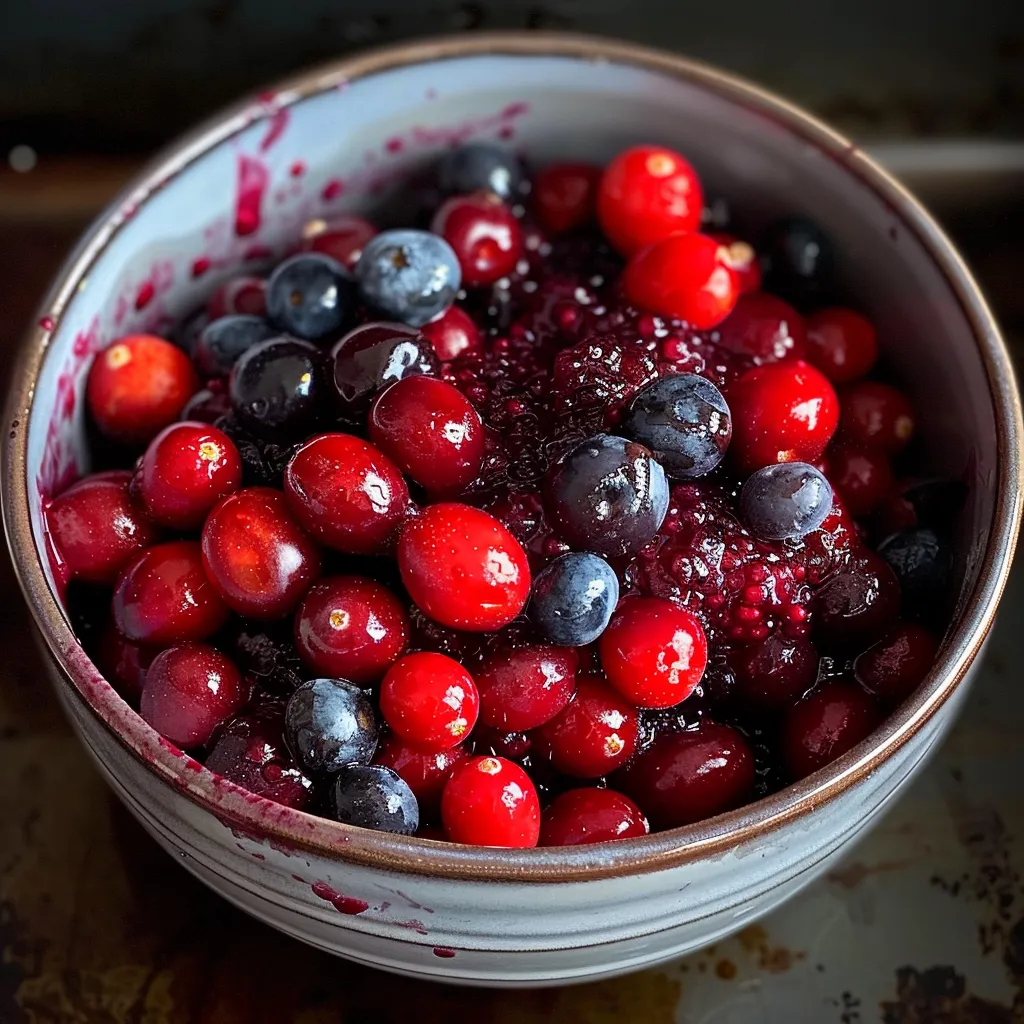 Pin it
Pin it
Each spoonful of Wojapi showcases generations of Native American cooking expertise through its smooth, silky consistency. This deep-colored berry sauce packs summer fruits' intense flavors, striking a nice balance between sweetness and tang. I first tried this at a cultural sharing meal with my Lakota buddy, and I've grown to value both its amazing taste and its importance as a treasured dish among numerous tribal communities.
Key Ingredients
- Berry Mix: Old-school versions typically include chokecherries, buffalo berries, or juneberries, but mixing cherries, blueberries, and cranberries gives you that perfect sweet-sour combo.
- Light Sweetening: Original Wojapi mostly relied on the berries' own sweetness. I just add a touch of honey to boost but not overpower the fruit's natural taste.
- Patience: Cooking slowly helps blend the flavors and lets the fruit's natural pectins create just the right thickness.
 Pin it
Pin it
Step-by-Step Guidance
- Choosing Your Berries
- Mix different berries for richer flavor.
- Make sure to throw in something tangy like cranberries.
- You can cook frozen berries without thawing first.
- Skip any berries packed with sugar or syrup.
- Slow and Steady Cooking
- Put your berries straight into the pot.
- Keep the heat down low to slowly draw out juices and taste.
- Don't add water – just wait and you'll get the right consistency.
- Stir softly now and then for even heating.
- Getting the Sweetness Right
- Let the berries break down completely before you taste test.
- Add small amounts of sweetener, starting with just a spoonful.
- Give it time between adding more sweetness.
- Keep in mind the sauce gets sweeter as it cools down.
- Adjusting the Consistency
- Think about how thick you want your sauce.
- For the authentic feel, keep some berry chunks intact.
- Use short blender bursts instead of continuous blending to maintain control.
- Remember it'll thicken up more after cooling.
Heritage Value
Wojapi means more than just tasty food – it's a living link to Indigenous food traditions that have fed communities for countless years. This sauce was traditionally part of ceremony meals and celebrations, made from berries that communities gathered and saved together.
Great Combinations
Though traditionally eaten with fry bread, this flexible sauce works with loads of different foods. I really enjoy it with wild game meats, where the fruity tang cuts through the rich meat flavors wonderfully.
Smart Cooking Advice
- Pick a thick-bottomed cooking pot: This stops burning if you're not using a slow cooker.
- Pour into ice cube trays: For easy small servings later.
- For fancy meals: Toss in some crushed juniper berries while cooking.
This basic-looking sauce packs amazing flavors and deep cultural roots in every bite. Making Wojapi gets me connected to old-school cooking methods that honor ingredients and let their natural goodness shine through. Watching plain berries slowly transform into something so wonderful feels almost like magic – a reminder that the best foods often come from the simplest recipes.
 Pin it
Pin it
Frequently Asked Questions
- → What dishes go well with Wojapi?
- Traditionally paired with fry bread, but it’s also ideal as a topping for pancakes, ice cream, savory meats, or as a side for dipping.
- → Can I use other berries for Wojapi?
- Absolutely. Use fresh picks like raspberries, chokecherries, blackberries, or juneberries based on what’s at hand!
- → How long can Wojapi last in the fridge?
- It’ll stay fresh for up to 14 days if kept in an airtight container in the refrigerator.
- → Can I cook Wojapi if I don’t own a slow cooker?
- Sure, just use a stovetop. Let it simmer on low heat for about 1-2 hours with occasional stirring.
- → Is honey the only sweetener option for Wojapi?
- Not necessarily. You can swap it with maple syrup, or even add a little sugar if that works better for you.
